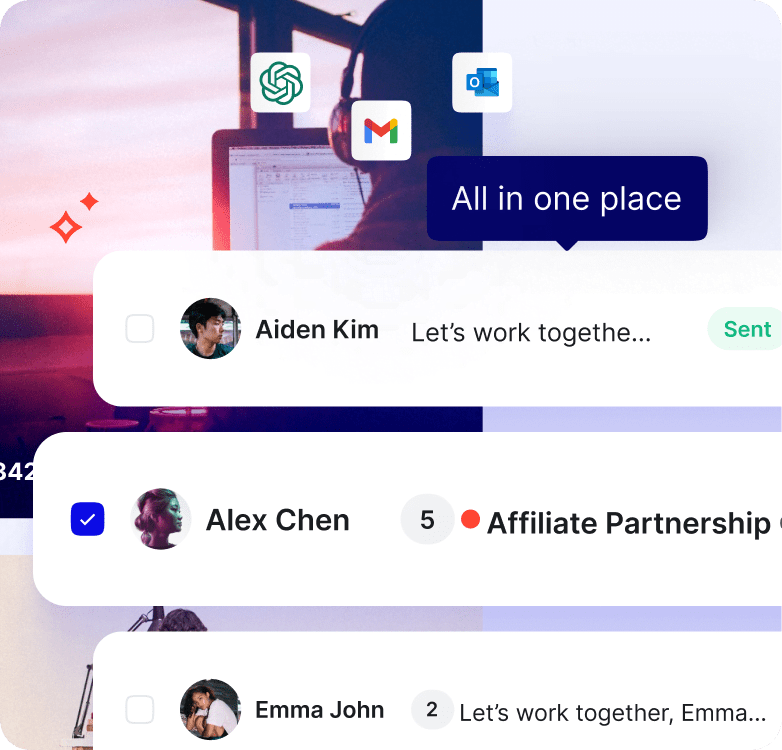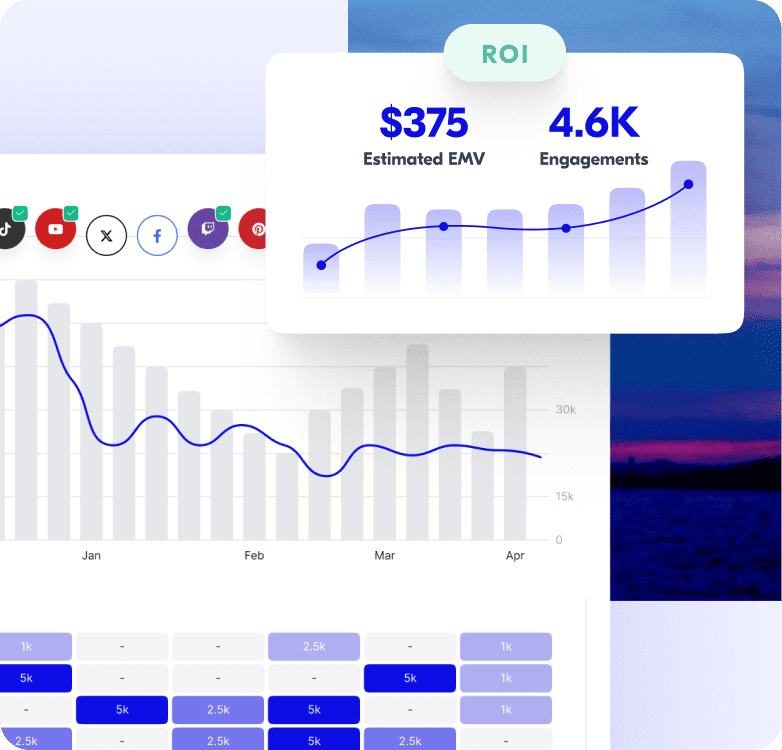Welcome to the forefront of revolutionizing your B2B marketing strategies.
In the digital era, where every business seeks a competitive edge, B2B influencer marketing emerges as a game-changer. Our comprehensive best practice guide is designed to help you navigate through the intricacies of influencer marketing for B2B, emphasizing the critical role of automation and introducing Upfluence as your ally in this journey.
Best Practices for B2B Influencer Marketing
Building Long-term Influencer Relationships
Fostering lasting relationships with influencers can lead to more authentic and impactful collaborations over time. It’s not merely about transactions; it’s about cultivating genuine connections that evolve into strategic partnerships. Influencers who share a natural affinity with your brand can offer more authentic endorsements, making your campaigns resonate more deeply with the target audience.
Crafting Authentic Content
The authenticity of content is crucial in B2B influencer marketing. Content that reflects genuine use cases and offers real value to the audience establishes trust and strengthens your brand’s credibility. Working closely with influencers to create content that aligns with your brand’s values while allowing them creative freedom ensures that the partnership yields content that is both engaging and true to the influencer’s voice, thereby enhancing audience resonance and engagement.
Measuring Success and ROI
Establishing clear metrics for success and regularly assessing ROI are critical for understanding the value of influencer marketing efforts and guiding future strategies.
Tools and technology play a significant role in identifying, engaging, and managing influencers, as well as in tracking campaign performance. Look for influencers whose audience demographics align with your target market and evaluate influencers based on their reputation, engagement levels, and content relevance. Utilize advanced analytics to measure key performance indicators such as reach, engagement, conversion rates, and ultimately ROI.

This holistic approach to measurement ensures you’re not only capturing the full impact of your campaigns but also continuously optimizing for better outcomes.
Developing a B2B Influencer Marketing Strategy
Setting Clear Objectives and KPIs
A successful strategy begins with defining clear objectives and a success metric for this campaign, whether it’s increasing brand awareness, generating leads, or driving sales. Key Performance Indicators (KPIs) should be established to measure the effectiveness of the influencer campaign against these goals:
- Reach and Impressions: Measure the total number of people who have seen the content published by your influencers. This indicates the potential visibility of your brand among the target audience.
- Engagement rates: Calculate by dividing the total number of engagements (likes, comments, shares) by the total number of impressions, then multiply by 100. This shows how much the audience interacts with the content, which is crucial for building brand affinity and trust.
- Click-Through Rate (CTR): Determine by dividing the number of clicks on a link by the number of impressions, then multiply by 100. CTR is pivotal for assessing how effectively your content motivates the audience to take action, such as visiting a website or landing page.
- Conversions and Sales: Track using unique promo codes, affiliate links, or UTM parameters that are specific to each influencer. This allows you to directly attribute sales or other desired actions (like sign-ups or downloads) to your influencer campaign.
- Return on Investment (ROI): Calculate by taking the revenue generated from the campaign, subtracting the cost, and then dividing by the cost. Multiply the result by 100 to get the percentage. ROI is essential for evaluating the financial success of your campaign.
Continuously track campaign performance against your KPIs. Use the insights gained to tweak and improve future campaigns for better alignment with your B2B audience’s preferences and behaviors.
Content Collaboration and Messaging
Collaborating with influencers on content creation ensures that the messaging resonates with the target audience while remaining authentic to the influencer’s voice. This collaboration can take various forms, including co-authored articles, webinars, and social media content, such as videos, photos, reels, etc.
Legal and Ethical Considerations
Navigating the legal landscape is crucial in influencer marketing. Agreements should outline content deliverables, usage rights, and disclosure requirements to comply with regulations and maintain transparency.

The Role of Automation in B2B Influencer Marketing
Streamlining Influencer Discovery and Management
Automation tools can significantly streamline the process of identifying and managing influencers, saving time and resources. These tools facilitate efficient communication, campaign tracking, and performance analysis.
Enhancing Engagement and Measurement
Automation enables brands to monitor campaign performance in real-time, measure engagement, and adjust strategies accordingly. This data-driven approach ensures campaigns are optimized for maximum impact.

Streamline your B2B Campaigns with Upfluence
Upfluence: Your Partner in B2B Influencer Marketing
How Upfluence Simplifies Influencer Marketing for B2B
Authentic engagement
Find influencers who are already fans of your brand, ensuring genuine and impactful promotions. This authenticity not only resonates more with potential customers but also boosts campaign relevance and effectiveness.

Centralized communication and time saving
Manage all your influencer interactions from one place. Whether it’s sending bulk personalized emails, collecting influencer details, or distributing payment links, Upfluence’s centralized hub streamlines the entire process, making it efficient and straightforward.
Accurate performance tracking
With advanced analytics at your fingertips, track everything from post engagements to the direct sales each influencer generates. This data allows you to accurately measure the true ROI of your collaborations, ensuring you can see the tangible impact of your influencer marketing efforts.
Simplified payments
Paying your influencer partners is effortless with Upfluence’s streamlined payment system. Whether you’re compensating hundreds or thousands of creators, this feature ensures a smooth transaction process, enhancing the experience for both your brand and the influencers.
Optimized campaigns for maximum ROI
Utilize real-time performance data to continually refine and optimize your influencer marketing strategies. This proactive approach ensures your campaigns always deliver maximum impact, driving significant ROI and ensuring your marketing budget is invested wisely.

Looking Ahead: The Future of B2B Influencer Marketing
Emerging Trends and Technologies
The B2B influencer marketing landscape is continually evolving, with new trends and technologies shaping the future of how brands engage with influencers and their audiences.
As we look ahead, the integration of AI, such as ChatGPT within platforms like Upfluence, marks a significant leap forward, enhancing creator communications and streamlining processes with optimized, auto-generated emails. This evolution points towards a seamless and efficient experience in influencer collaboration, emphasizing the importance of authenticity, strategic partnerships, and data-driven decision-making.

Preparing for the Next Wave of B2B Marketing Innovation
To stay competitive, brands need to embrace these innovations, leveraging AI for smarter campaign insights and prioritizing genuine influencer partnerships that resonate with target audiences. Experimenting with interactive and video formats can captivate users more effectively, and adopting a performance-driven approach to influencer collaborations will ensure marketing investments yield tangible results. Ultimately, building long-term relationships with influencers will provide consistent, authentic engagement, key to navigating the future of B2B marketing successfully.
FAQ
B2B influencer marketing focuses on long-term relationships and relies on industry experts and thought leaders to influence business decisions and strategies, rather than consumer buying behavior. The content is more informational and professional, aimed at a niche audience of business decision-makers and professionals, compared to the often broader and more lifestyle-focused B2C influencer content.
Measuring ROI in B2B influencer marketing involves tracking metrics such as lead generation, engagement rates, website traffic, brand awareness (measured through surveys or brand mentions), and ultimately, sales conversions attributable to the influencer campaign. Tools and platforms like Upfluence can provide analytics to help measure these metrics effectively.
Finding the right influencers requires a strategy that includes identifying individuals who align with your brand’s values, have a relevant and engaged audience, and possess the ability to influence decision-makers within your industry. Utilizing data-driven tools for influencer discovery, such as Upfluence, can streamline this process by analyzing influencers’ audiences, engagement rates, and content relevance.
Effective B2B influencer content is often educational, informative, and adds value to the audience’s professional lives. This can include webinars, whitepapers, case studies, industry analysis, expert interviews, and thought leadership articles. The key is to produce content that helps solve problems or provides insights relevant to the target audience’s business challenges.
Compliance involves clear communication of the partnership’s nature and terms, including disclosure requirements to the audience, adhering to industry regulations, and ensuring content authenticity. Drafting comprehensive agreements that detail content deliverables, usage rights, and ethical guidelines is crucial. Regularly reviewing regulatory changes and consulting legal advice when necessary can also help ensure campaigns remain compliant.


















